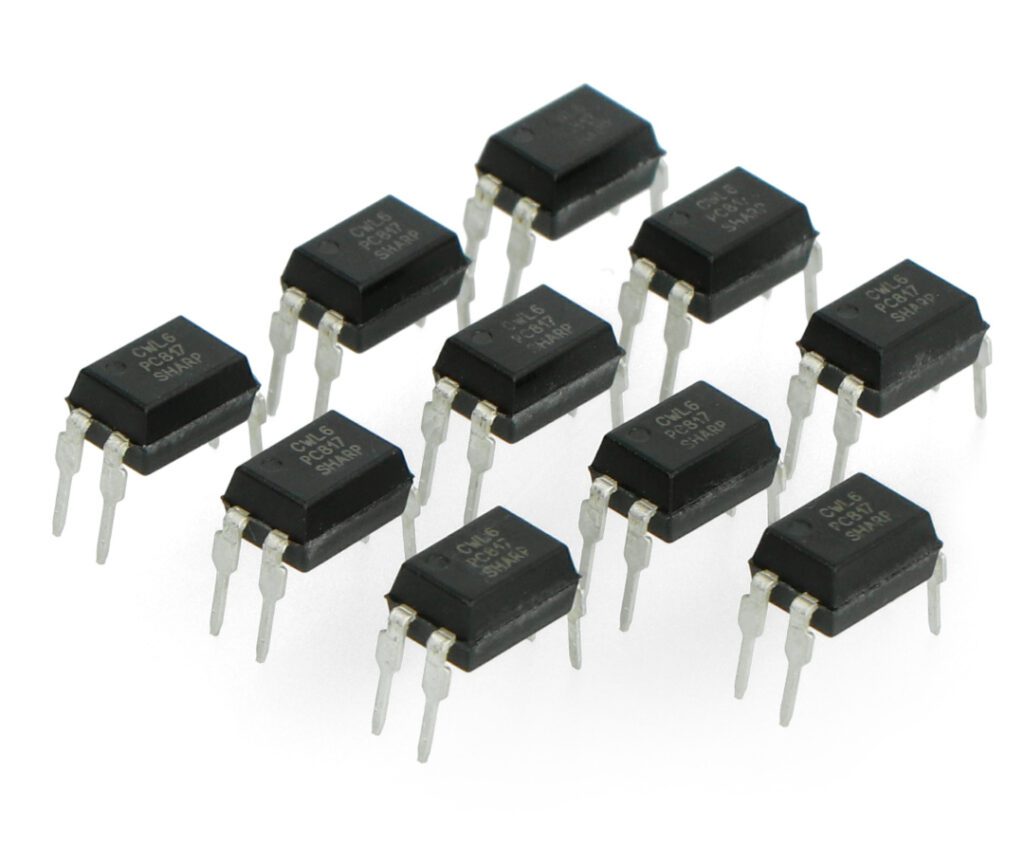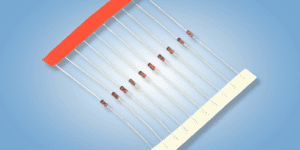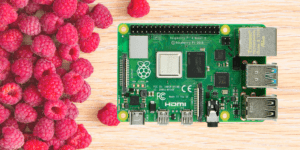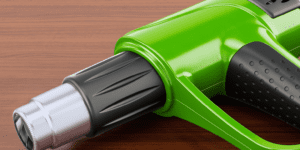Spis treści:
An optocoupler is an electronic component that plays an important role in isolating and transmitting signals between different circuits. What is it and what applications does it have?
What exactly is an optocoupler?
Transoptor, also known as optocoupler or phototransistor, is an electronic component used to isolate and transmit electrical signals between two different circuits while ensuring their galvanic separation. It is a semiconductor device that usually consists of an LED and a phototransistor, phototriode or other photosensitive element enclosed in a single housing.
In practice, the way it works is that an LED emits light when current flows through it. This light is then detected by a photosensitive element, which generates an electric current in response. This allows an electrical signal to be transmitted from one side to the other, but without a direct electrical connection, minimizing the risk of interference or surges.
Optocouplers are often used in circuits where high isolation is required between different parts of a circuit, such as in power supplies, control systems, communication interfaces or security systems. Thanks to their properties, optocouplers are indispensable in many fields of technology.
What are the types of optocouplers?
The optocouplers come in different variants to suit specific needs and applications. Here are some of the most popular types:
- Phototransistors – these are the most basic optocouplers, consisting of an LED and a phototransistor. They are mainly used in signaling and control systems.
- Phototriangic optocouplers – instead of a phototransistor, these optocouplers use a phototriac . They are often used in power control and power systems.
- Photodiode opt ocouplers – in these optocouplers the receiving element is a photodiode. They are used in more advanced measurement applications.
- Photo-Darlington opt ocouplers – these are optocouplers in which the receiving element is a Darlington circuit of phototransistors. They offer very high current amplification and are used in systems requiring high sensitivity.
- Optocouplers with optical AC couplers – these optocouplers are designed to transmit variable signals and are often used in telecommunications.
- Multichannel optocouplers – offer the ability to isolate and transmit several signals simultaneously using a single chip.
Each of the aforementioned types of optocouplers has its own unique characteristics and applications, so it is important to thoroughly understand the requirements of a particular project before selecting the appropriate optocoupler.
Examples of the use of optocouplers in practice
Optocouplers are extremely versatile components that are used in a wide variety of technical and industrial fields. Here are some examples of their practical use:
Power supplies
Optocouplers are often used in switching power supplies to isolate between the primary and secondary circuits to ensure safety and stability of operation.
Control systems
In industry, optocouplers are used to isolate control signals, allowing safe and efficient management of machinery and equipment.
Communication interfaces
In communication systems such as RS-232 or Ethernet, optocouplers provide isolation and protection from electromagnetic interference.
Security systems
In alarms and monitoring systems, optocouplers are used to isolate signals, preventing false alarms and other problems.
Energetics
In power plants and power grids, optocouplers are used to isolate and control various stages of energy transmission and distribution.
Audio systems
In professional audio systems, optocouplers are used to isolate audio signals, preventing interference and distortion.
Automotive
In automobiles, optocouplers are used in engine control systems, ABS and other safety systems.
Process automation
In the chemical, food or pharmaceutical industries, optocouplers are used to control and monitor production processes.
Optocouplers are among the most versatile and reliable components in electronics and technology. Their ability to isolate electrical signals between different circuits makes them ideal for applications where safety and reliability are key. They not only protect systems from interference and surges, but also enable precise control and monitoring of various processes.
How to use an optocoupler in your project? Tips for beginners
If you are taking your first steps in the field of electronics and you are wondering how to use a optocoupler in your project, the first step is to understand what specifically you want to use it for. Is it about signal isolation, surge protection, or something else? Next, identify the type of optocoupler that will best meet your requirements. It could be a phototransistor optocoupler for simple control applications or a phototransistor optocoupler for power control.
Once you have chosen the right type, pay attention to its parameters, such as voltage, current and response time, to make sure they are compatible with the rest of your circuit. And don’t forget additional components, such as resistors or capacitors
, which may be needed for proper operation of the optocoupler.
Before you start soldering and assembling the circuit, it’s a good idea to first test it on a contact board. This will allow you to identify any problems and make the necessary adjustments. Once everything is working as planned, you can proceed with the installation.
Use available resources and online tutorials. The knowledge and experience of others can be invaluable in the learning and creation process. In this way, you will not only complete your project, but also gain valuable knowledge and skills for the future.
How useful was this post?
Click on a star to rate it!
Average rating 5 / 5. Vote count: 1
No votes so far! Be the first to rate this post.






